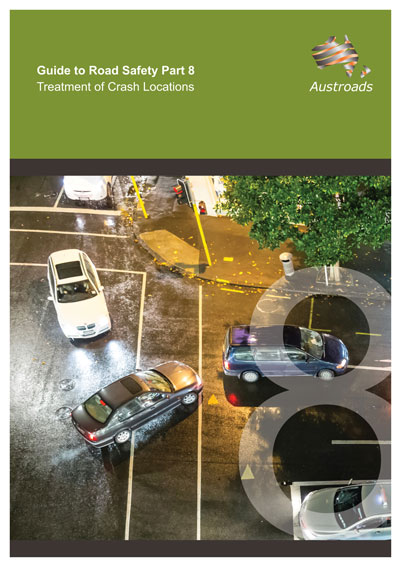Road Safety

- Publication no: AGRS08-15
- ISBN: 978-1-925294-77-4
- Published: 11 June 2015
- Edition: 2
- Superseded
- PDF (free) Download
Guide to Road Safety Part 8: Treatment of Crash Locations contains practical, hands-on advice to help practitioners in road agencies investigate and treat locations on the road system which are experiencing crashes. By effectively treating these locations, through the application of effective engineering solutions, the number and severity of crashes can be reduced.
The treatment of crash locations and the process of road safety audit involve the application of road safety engineering knowledge and experience to make roads safer – one after crashes occur and the other beforehand. Treatment of Crash Locationsexplains the step-by-step process of how to identify crash locations, diagnose the crash problem and its causes, how to select a countermeasure which targets the problem, design a safe remedial treatment and establish its cost-effectiveness. The Guide also provides information on sources of road crash data and how engineering improvements fit into an overall road safety strategy. Treatment of Crash Locationscomplements the Austroads Guide to Road Safety Part 6: Road Safety Auditand Part 7: Road Network Crash Risk Assessment and Management.
A template of the blank factor matrix form (provided in Appendix C) can be downloaded as a Microsoft Word file.
A restructured edition of Guide to Road Safety was published in July 20201. The material from this Part was incorporated into Guide to Road Safety Part 2: Safe Roads.
Edition 2.0 of the Guide has been substantially revised. Other significant changes include: increased linkages to and inclusion of ‘proactive’ measures; added information on developing a program to address crash risk; inclusion of greater detail on the Safe System approach; additional countermeasures added to Table 4.4 to Table 4.7; updating terminology to use ‘crash modification factors’ instead of ‘crash reduction factors’; increased focus on route reviews in Section 1.5.4; and commentary has been added in Sections 2.1 and 3.1.2 on prioritising FSI crashes over other crashes.
